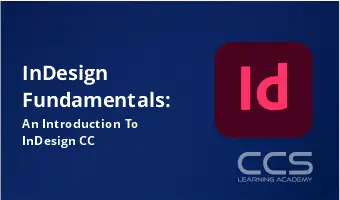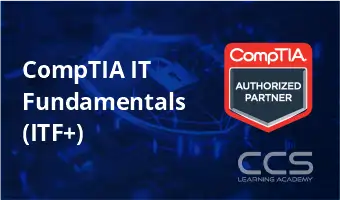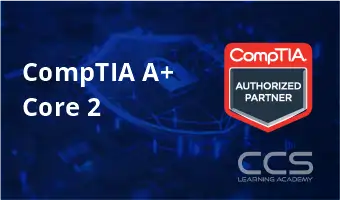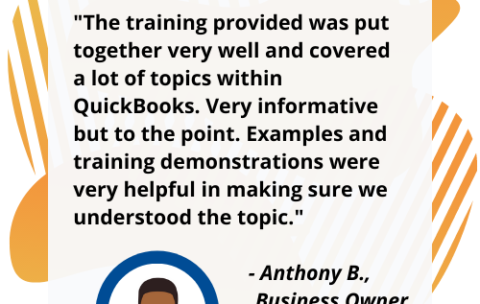Popular Topics
Data Analyst
CompTIA Security+
Certified in Cybersecurity Training
CISSP
Risk and Compliance
Certified in Governance
AWS
Developing Generative AI on AWS
Cloud Computing
Administering A SQL Database
CompTIA Cybersecurity Analyst
ITIL 4 Certification
Microsoft Azure
CISSP Exam Preparation Course
Microsoft Office 365 Online
ITIL 4 Foundation Certification Training
Penetration Testing Certification
Certified Cloud Security Professional
Azure AI Fundamentals
CompTIA Linux
PECB ISO 31000 Certification
Generative AI Applications on AWS
Penetration Testing Professional
Security Engineering on AWS
Developing AWS Services and Tools
ISO 22301 Certification
Chief Information Security Officer
Certified Secure Software Lifecycle Professional
CompTIA
Cybersecurity Analyst
Microsoft Azure Certification
SQL Server Performance Tuning
ISO 31000 Certification
Advanced Developing on AWS
SQL Server Performance Optimization
ISO 31000 Risk Manager
Network Defender
AWS Cloud Essentials
SQL Data Models
SQL Server Integration
ISO / IEC 42001 Lead Auditor
SQL Data Warehouse
ISO/IEC 42001 Lead Implementer
Security on AWS
Cloud Operations on AWS
ISO 22301 Lead Auditor
SharePoint End User
Microsoft Azure Data Fundamentals
ISO 22301 Lead Implementer
Lead Pen Test Professional
Microsoft Azure Fundamentals Training Certification
ISO 31000 Lead Risk Manager
Microsoft Project 2016 Level 1
CompTIA IT Fundamentals
Cybersecurity Foundation
Microsoft Project 2016: Level 2
CompTIA Cloud
Cybersecurity Certification
SQL Database Infrastructure
CompTIA A+ Core 1
CMMC Foundations
Azure Infrastructure Solutions
CompTIA Server
ISO / IEC 42001 Certification
Citrix Endpoint Management
CMMC Certification
Azure AI Solution
CompTIA PenTest
Citrix
Microsoft Power BI Data Analyst
CMMC Certified Professional
Citrix Cloud with Amazon Web Services
Microsoft PoerShell
CompTIA Data+
CompTIA Cloud Essentials+
Azure SQL Solutions
Lead Cloud Security Manager
Microsoft Azure for SAP Workloads
Microsoft Azure Administrator
PL-600 Power Platform Solution Architect
CompTIA Project
CompTIA A+ Core 2
Cloud Security Manager
CompTIA Network
Cloud Security Certification
All `Live Courses by Vendor Courses
Filter by Topic
Filter by Vendor
ISO/IEC 27005 Lead Risk Manager
Master the Systematic Approach To Risk Management With ISO 27005 …
What you'll learn
Master the concepts, approaches, methods and techniques that enable an effective risk management process based on ISO/IEC 27005
Acknowledge the correlation between Information Security risk management and security controls
Learn how to interpret the requirements of ISO/IEC 27001 in Information Security Risk Management
Acquire the competence and skills to effectively advise organizations on Information Security Risk Management best practices
Acquire the knowledge necessary for the implementation, management and maintenance of an ongoing risk management program
ISO 31000 Lead Risk Manager
The Enhanced Risk Management Certification Online ISO 31000 is considered …
What you'll learn
Understand the risk management concepts, approaches, methods, and techniques
Learn how to interpret the ISO 31000 principles and framework in the context of an organization
Learn how to apply the ISO 31000 risk management process in an organization
Learn how to establish a risk recording and reporting process and an effective risk communication plan
Develop the ability to effectively manage, monitor, and review risk in an organization based on best practices
ISO/IEC 27032 Lead Cybersecurity Manager
Course Description This PECB ISO/IEC 27032 Lead Cybersecurity Manager certification …
What you'll learn
Acquire comprehensive knowledge on the elements and operations of a Cybersecurity Program in conformance with ISO/IEC 27032 and NIST Cybersecurity framework
Acknowledge the correlation between ISO 27032, NIST Cybersecurity framework and other standards and operating frameworks
Master the concepts, approaches, standards, methods and techniques used to effectively set up, implement, and manage a Cybersecurity program within an organization
Learn how to interpret the guidelines of ISO/IEC 27032 in the specific context of an organization
Master the necessary expertise to plan, implement, manage, control and maintain a Cybersecurity Program as specified in ISO/IEC 27032 and NIST Cybersecurity framework
Acquire the necessary expertise to advise an organization on the best practices for managing Cybersecurity
ISO/IEC 27001 Lead Implementer
Course Description ISO/IEC 27001 Lead Implementer training course enables participants …
What you'll learn
Gain a comprehensive understanding of the concepts, approaches, methods, and techniques used for the implementation and effective management of an ISMS
Acknowledge the correlation between ISO/IEC 27001, ISO/IEC 27002, and other standards and regulatory frameworks
Understand the operation of an information security management system and its processes based on ISO/IEC 27001
Learn how to interpret and implement the requirements of ISO/IEC 27001 in the specific context of an organization
Acquire the necessary knowledge to support an organization in effectively planning, implementing, managing, monitoring, and maintaining an ISMS
ISO/IEC 27001 Lead Auditor
Understand ISO 27001 With Our Training Courses ISO 27001 certification …
What you'll learn
Understand the operations of an Information Security Management System based on ISO/IEC 27001
Acknowledge the correlation between ISO/IEC 27001, ISO/IEC 27002 and other standards and regulatory frameworks
Understand an auditor’s role to: plan, lead and follow-up on a management system audit in accordance with ISO 19011
Learn how to lead an audit and audit team
Learn how to interpret the requirements of ISO/IEC 27001 in the context of an ISMS audit
Acquire the competencies of an auditor to: plan an audit, lead an audit, draft reports, and follow-up on an audit in compliance with ISO 19011
Agile Coaching Workshop (ICP-ACC)
Course Description New – Learn a practical, real-world framework designed …
What you'll learn
The definition of Agile coaching and the set of competencies and practices associated with being a coach.
How to develop ethical and professional coaching standards and agreements and how to apply them in your coaching engagements with teams and organizations.
The various roles, skillsets and disciplines of an Agile coach – coaching, facilitating, mentoring, teaching and how to develop “your style,” moving in and out of those roles while remaining flexible, open and confident.
The philosophy behind servant leadership and practices and techniques to enable you to become a true servant leader; putting the needs of others first to facilitate the development of high performance teams.
Agile Coach thinking – the mindset shift necessary to help you, and others, focus on team improvement, value-driven delivery, and leveraging constraints while living in the present moment, staying curious, innovative and having fun.
Ways to establish mutual trust allowing you to create a safe, supportive environment in which your team can excel.
Active listening and powerful questioning techniques utilized to leverage your ability to focus on what is being said and maximizing communication and collaboration through seeking and receiving information.
Advanced techniques in planning and goal setting in order to help the team/organization achieve their goals and your agreed-upon coaching results.
Techniques in creating awareness and designing in actions and learning which will assist you in managing progress and accountability within the team.
The use of ASPE’s Agile Coaching Competencies & Practices Framework — a framework for understanding and incorporating Purpose, Proficiency and Practices into your coaching engagements.
Certified Chief Information Security Officer | CCISO
Course Description The CCISO Certification is an industry-leading program that …
What you'll learn
Prepare for the CCISO exam
Navigate the day-to-day responsibilities of a CISO
Consider the technical aspects of the CISO role from an executive perspective
Plan security and financial strategies
Align CISO tasks with business goals and risk tolerance
Keep Going With QuickBooks 2021 for Windows
Course Description First-time QuickBooks users will learn the basic features …






























